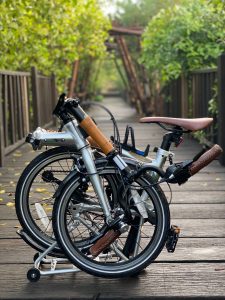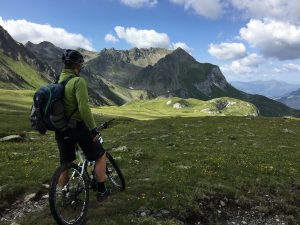Types of bikes – what is the best type of bike for me In 2023?
- Michael
- Last Updated August 13, 2023
We are a reader supported site. We earn commissions when you buy through links on our site. Learn more.
I fell in love with bicycles from the moment I learned how to ride. As I got older, I realized there were so many different types when it came time to make my first purchase; I hardly knew where to begin.
Over time, I have piqued my interest through intense research and, as a result, developed this breakdown of different types of bikes.
Road Bikes
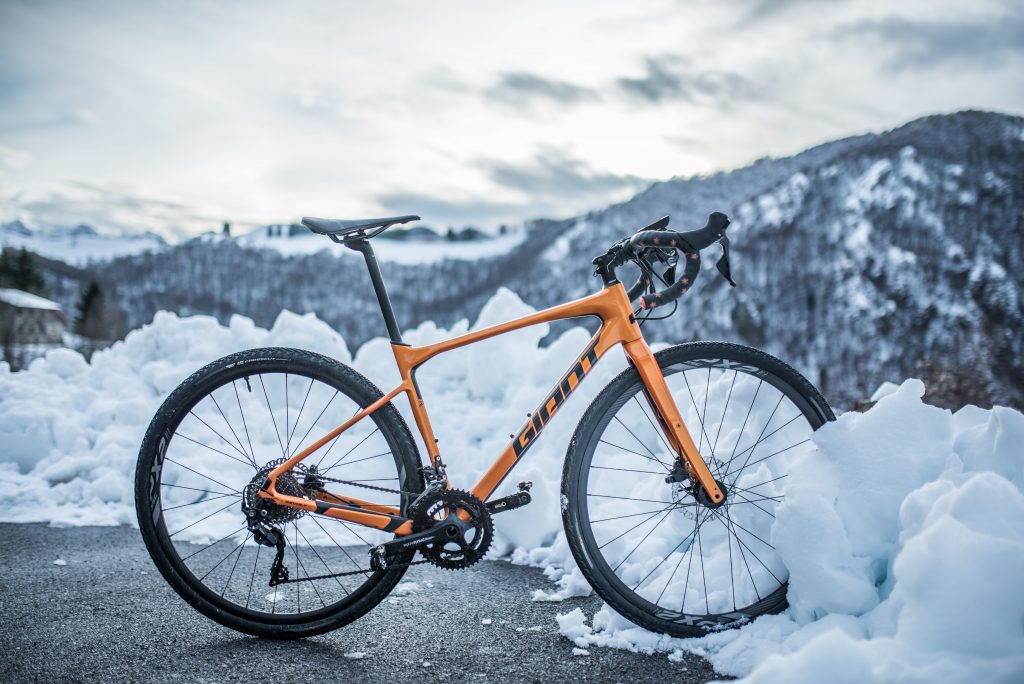
Read More: The Best Beginner Road Bikes For You In 2023
As you can imagine, road bikes are best for use on paved asphalt roads. Their design allows them to move as quickly as possible with minimal effort, with a distinct lightweight build.
Common characteristics of a road bike gear towards promoting your aerodynamics while riding and include:
- Lightweight frame
- Skinny tires
- Dropped handlebars (loop downwards)
Racing Bikes
Racing bikes, or triathlon bikes, are a style of road bikes designed with aerodynamics in mind. Because of this, these bikes are high-speed and ideal for triathletes looking to maximize their performance capabilities.
Typical features of a racing bike include:
- Narrow wheels
- Special handlebars
- Wing-style airfoil shaping
There are even specialized variations of racing bikes, which include the cyclo-cross bikes.
Cyclo-Cross Bikes
Cyclo-cross is a bike racing style that includes multiple terrains, such as pavement, trails, grass, hills, etc. Part of this race includes portions in which the rider must pick up and carry their bike through the course until they can ride again.
Because of this varying terrain, features of cyclo-cross bikes tend to be unique in design, specifically made for their sport, including:
- Fat tires
- Drop handlebars
- Disc brakes
Overall, road bikes offer versatility in that they are great for casual riding and long, endurance rides or even commuting.
Pricing
Road bikes can vary pretty drastically in price depending on some of their specific features. A fundamental road bike that still provides quality with an aluminium frame will easily cost you $800. The cost of specialized road bikes can easily exceed $15,000 and include rare materials, 22-speeds, and hydraulic brake systems.
Pros
- Top speeds
- Minimal effort
- Great for commuting
Cons
- The riding position can be uncomfortable to some
- The lightweight frame is susceptible to damage
- Not ideal for carrying cargo
Read More: The 7 Best Women’s Road Bikes For Beginners In 2023
Mountain Bikes
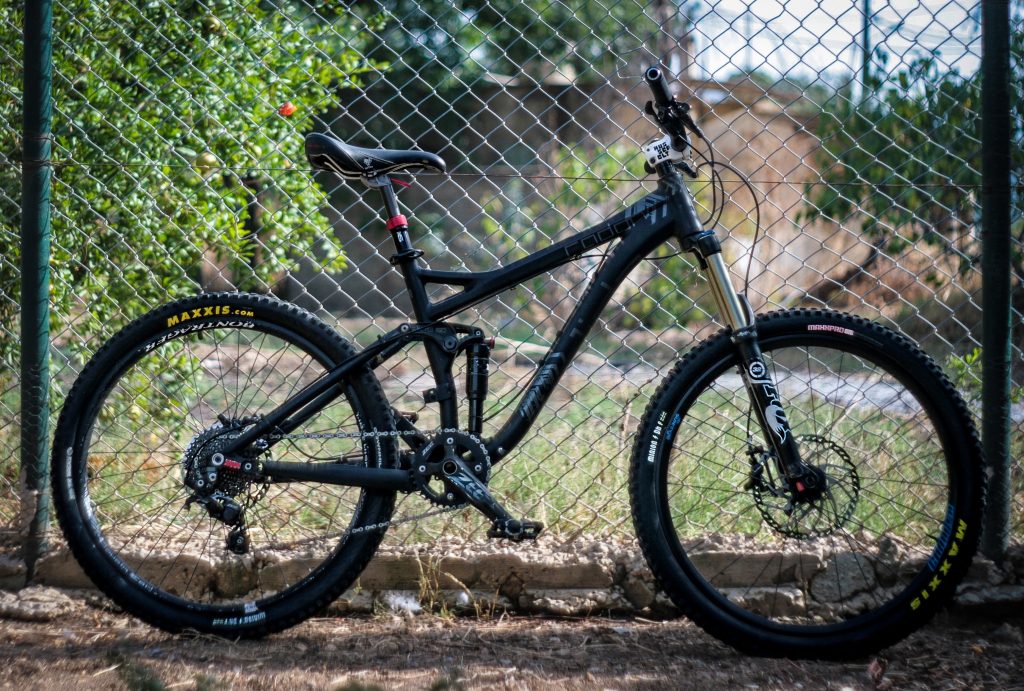
Read More: The Best Budget Mountain Bikes In 2023 For Off-The-Road Adventures
If you’re looking to take your rides to the trails, mountain bikes are an excellent option. Their design handles the most rugged of terrains found in nature.
Mountain bikes handle the challenges of natures with standard features that include:
- Large tires with ultra traction
- Powerful vehicle-style brakes
- Wide range of gears
Most mountain bikes also have some suspension systems, which increases the costs with the design’s complexity on your bike.
Overall, mountain bikes also provide a wide range of functionality. They serve their intended purposes and are popular for casual riders as the riding position is a bit more relaxed than road bikes.
Pricing
Like road bikes, mountain bikes can also vary significantly in price range because they can have different specialties. A basic, reliable mountain bike can be as low as $400. If you are looking for more customized models with carbon fiber frames, you can expect to pay anywhere around $10,000.
Pros
- A more comfortable riding position
- Tough, durable body
- A heavy-duty braking system
Cons
- Heavy body and tires
- Moves slowly on roads
- Good suspensions can be very expensive
Read More: 7 Best Beginner Mountain Bikes In 2023: Reviews And Buyer’s Guide
Hybrid Bikes
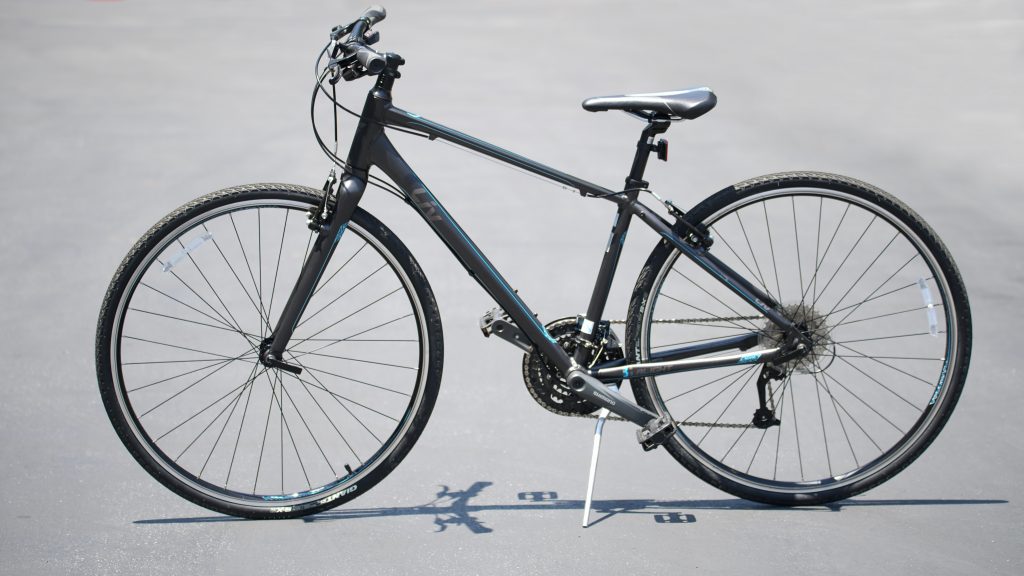
Known as being in between a road bike and a mountain bike are hybrid bikes. These highly versatile bikes take the lightweight frames and tires of road bikes with the more comfortable riding position of a mountain bike to create the perfect blend.
As a result, hybrid bikes are great for shorter commutes or daily activities and typically have features that include:
- Flat bar, lightweight frame
- Strong disc style brakes
- Mounting options
Although the upright riding position does cause more drag and slows you down, it proves to be beneficial for urban riding as you can look further ahead of you while riding.
Pricing
Hybrid bikes are very affordable, with basic quality models starting around $500. They can increase in price to slightly over $2,000.
Pros
- Great for casual riders and short commutes
- Comfortable, upright riding position
- Useful for carrying extra cargo
Cons
- Heavier body than road bikes
- Less aerodynamic bike and riding position
- Lower overall speeds achieved
Touring Bikes
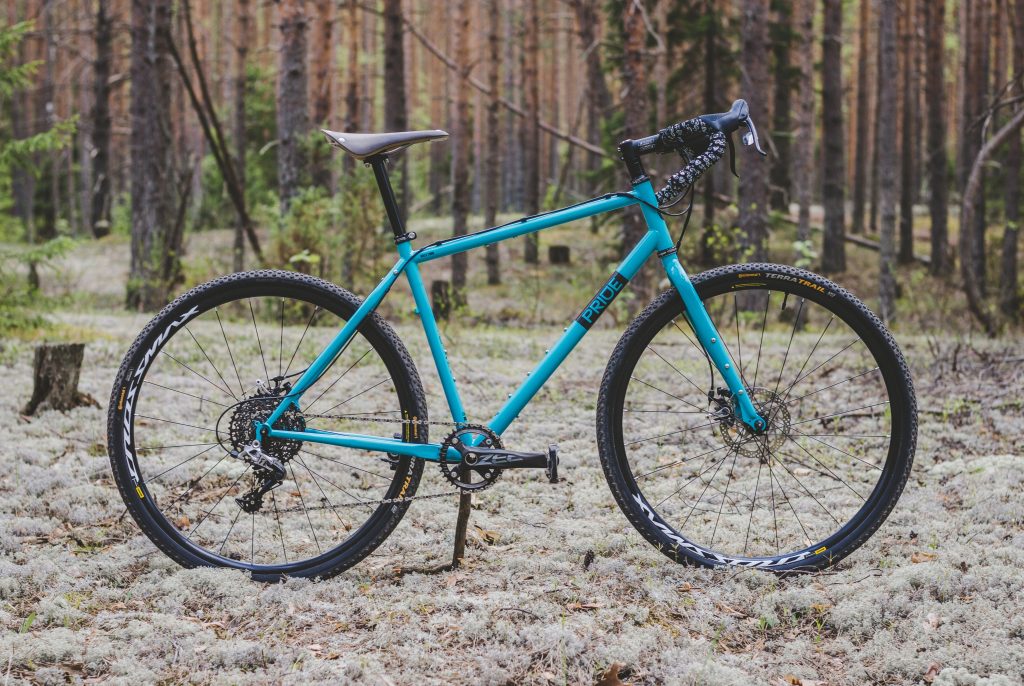
Touring bikes go by several different names, which include:
- Adventure bikes
- Gravel bikes
- All-road bikes
- Bikepacking bikes
Like hybrid bikes, touring bikes are a bit of a blend between the road and mountain bikes, leaning slightly heavier towards the spectrum’s mountain bike side. While hybrid bikes are great for the urban commuter, touring bikes are better for long-distance or varying terrain rides.
Some of the features that identify a touring bike include:
- Triple chainwheels
- Multiple racks for load carrying
- Drop style handlebars
Touring bikes are great for just that—touring. Whether it be rougher city road commutes or cross-continent adventures, these bikes will withstand.
Pricing
Your most basic touring bike will run around $1,000 and have an aluminium frame with your standard disc brakes. With carbon fiber materials, touring bikes can easily hit the $10,000 mark on the high end.
Pros
- The best option for carrying large loads
- Great for distance rides
- Decently quick ride
Cons
- Not built for speed
- Do not make excellent road race bikes
- Heavier weight
Utility Bikes
Utility bikes, by definition, are designed with their primary purpose being for functionality rather than recreation. In some developing countries of the world, utility bikes are the primary source of basic transportation.
Of the utility bike type, four subcategories are the most popular for urban riding:
Commuter Bikes
Commuter bikes are known for being both efficient and quick and typically have these standard features:
- Flat handlebars
- Upright riding position
- Multi-gear drivetrains
Commuter bikes are great for urban commutes because they allow for more visibility with the upright position while maintaining the disc brakes’ security.
Fixed Gear Bikes
One of the most popular bikes you will see, fixed gear bikes are undoubtedly stylish in their design. You will commonly see these features in fixed gear bikes:
- Lightweight frames
- Single, fixed gear
- Color-matching accessories
Fixed gear bikes, also known as fixies, are very similar to track racing bikes and the urban bike world.
Cargo Bikes
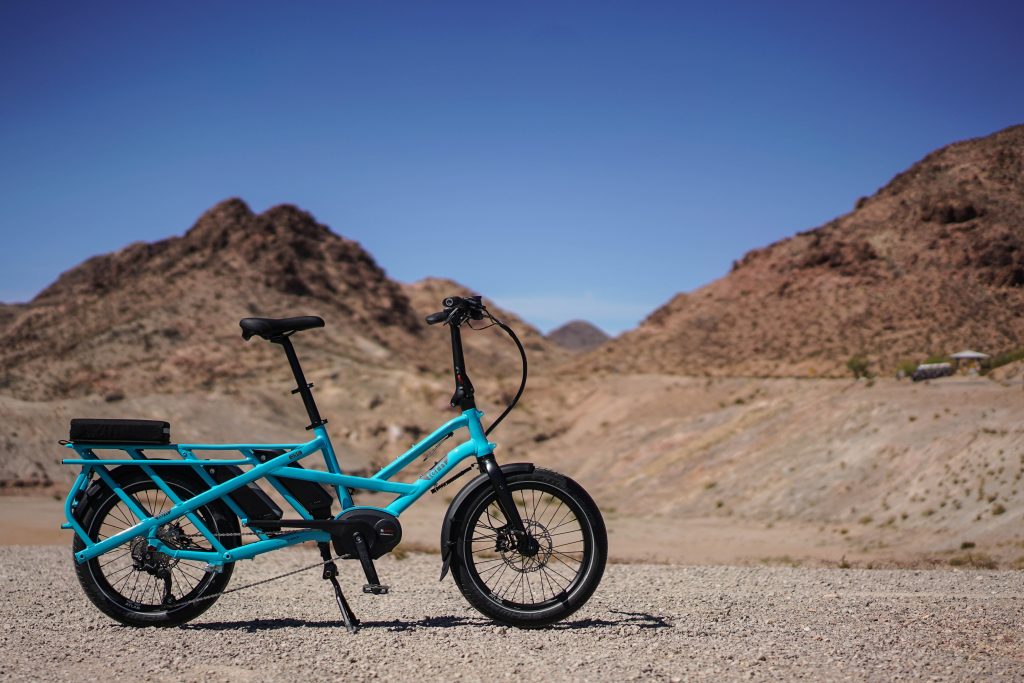
To breaking down the subcategory of cargo bikes even further, there are three different styles of these bikes you will find:
Long-Tail Bikes
Long-tail cargo bikes are known to have a wheelbase that is stretched out and has built-in racks great for heavy cargo loads.
Mid-Tail Bikes
Mid-tail cargo bikes do their best to maintain long-tail bikes’ cargo-carrying capacity, but with a slightly shorter wheelbase. The idea is that mid-tail bikes provide marginally more versatility than long-tail bikes.
Front-Load Bikes
With a cargo bin in front of the rider and between the wheels, front-load cargo bikes have a low center of gravity design. This design makes front-load bikes the ideal candidate for extremely heavy cargo load rides.
Folding bikes
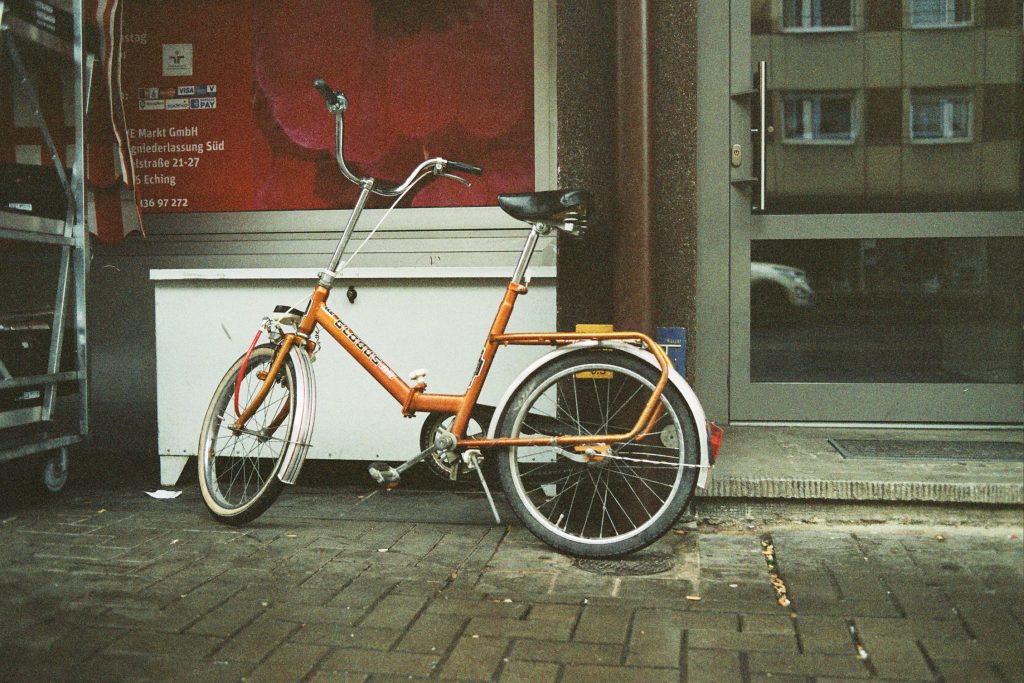
Understanding that space is extremely limited in urban environments, the folding bike offers a mode of transportation capable of being broken down into a smaller component. Folding bikes offer varying features that make them more compact and ideal for commuting via bicycle and public transit.
Pricing
One of the reasons utility bikes, fixed gear, and commuter bikes, in particular, are the most popular is because they are easily the most affordable option. These bikes start at $400 and make an excellent option for those who aren’t interested in having the fanciest models. On the higher end, these bikes can run around $2,000.
Cargo bikes will usually run anywhere from $1,500 to well over $5,000, depending on the specific designs.
Pros
- Lightweight design
- Simple and aesthetically pleasing
- Quick speed
Cons
- Some skill required to operate
- Difficulty with inclines
- High level of commitment in riders
Park Bikes
Park bikes are unique in that they catch as much air as possible off of jumps. There are specialized subtypes of the park bike category, including BMX, dirty jump, and slopestyle.
BMX Bikes
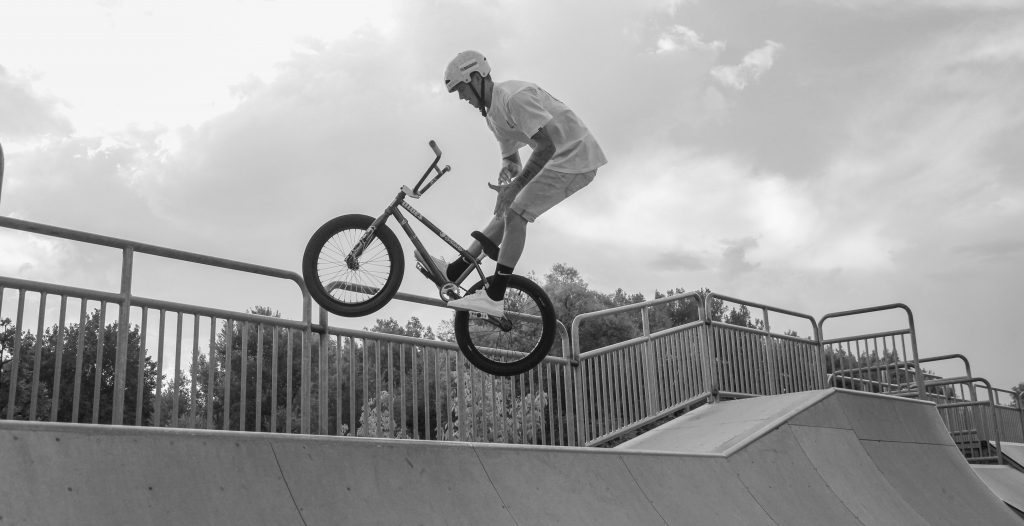
BMX originated in Southern California in the 1970s from children who were inspired by motocross. With it came the creation of the BMX bike, which was designed specifically for dirt track racing.
Some key features of BMX bikes include:
- Durable, yet small overall frame
- Single-speed
- Low seat, high handlebars
BMX bikes come in a wide range in terms of accessories and ways to make it truly your own. They are simple and fun to ride but should not be used as commuting bikes.
Dirt Jump Bikes
Dirt jump bikes come as a slight combination of a mountain bike and the traditional BMX bike. They are designed more for catching air from dirt jumps rather than racing like BMX bikes.
Notable features of dirt jump bikes include:
- Larger wheels
- Front suspension
- Front and rear brakes
Sometimes you will find dirt jump bikes in skate parks, although these bikes are much better suited for dirt terrain than concrete.
Slopestyle Bikes
Slopestyle bikes are suitable for fast and catching big air in either skate parks or heavily groomed trails.
- Full suspension
- 10-12 gears
- Front and rear brakes
Slopestyle bikes are great for human-made jumps or large vertical drops.
Pricing
BMX bikes are another trendy style of bicycles because they are incredibly affordable. You can easily find a quality BMX bike for around $350. Other, more advanced styled park bikes increase in price and are usually approximately $1,000-$2,000 depending on the terrain.
Pros
- Easily maneuverable
- Suitable for BMX or freestyle riding
- Lightweight and easy to transport
Cons
- Not intended for longer rides or commutes
- Uncomfortable saddle riding position
- Riding uphill can be challenging
Read More: The 7 Best BMX Bikes To Get In 2023
Electric Bikes
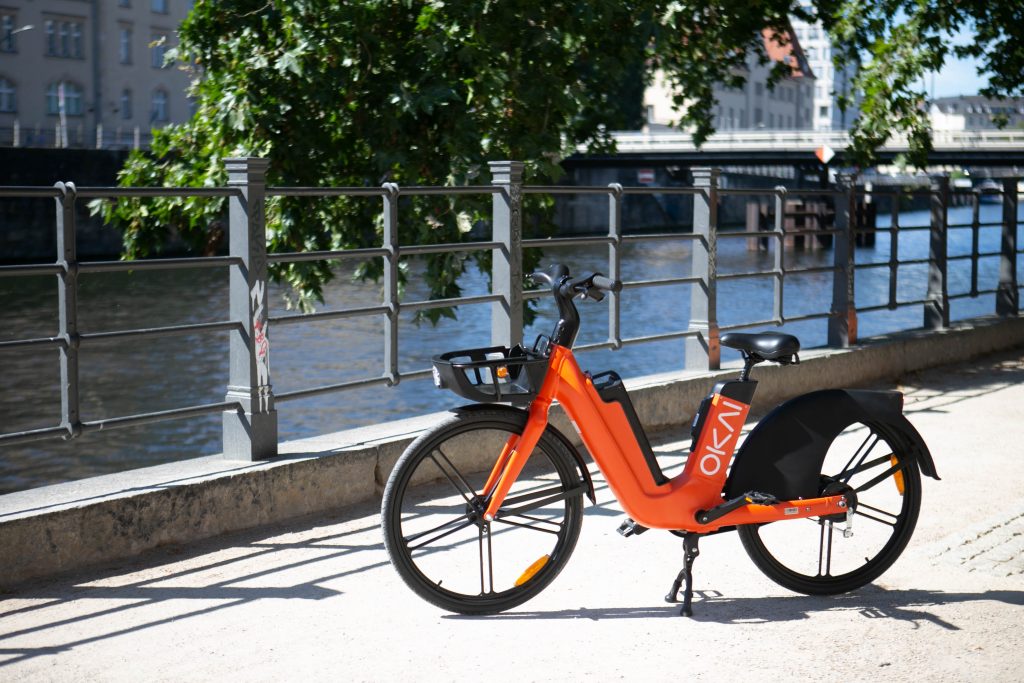
For anyone looking to get from point A to point B with the least amount of physical exertion, electric bikes are for you. Electric bikes are built with powerful motors and can be an excellent option for longer commutes or those who are looking to skip the shower before they get into work each morning.
Standard features of electronic bikes include:
- Flat handlebars
- Mudguards
- Cargo capacity
Laws surrounding the usage and requirements of electric bikes vary, so be sure to check your local regulations before purchasing.
While electric bikes have been around since the late 1800s, they didn’t gain traction until nearly one hundred years later as the technology evolved. Luckily, as they continue to gain popularity and the technology continues to grow, the prices ultimately decrease.
Pricing
Electric bikes with older technology are usually around $1,000. But, if you’re looking for the latest and greatest, they are generally about $2,000.
Electric mountain bikes are also becoming increasingly popular. Their typical price range is $1,500 to $6,000, but the super high-end models can be well over $10,000.
Pros
- Effortless riding
- Comfortable riding position
- A fun option to get around
Cons
- Expensive due to motor
- Heavier weight than standard bikes
- Recharging can be a pain
Kids’ Bikes
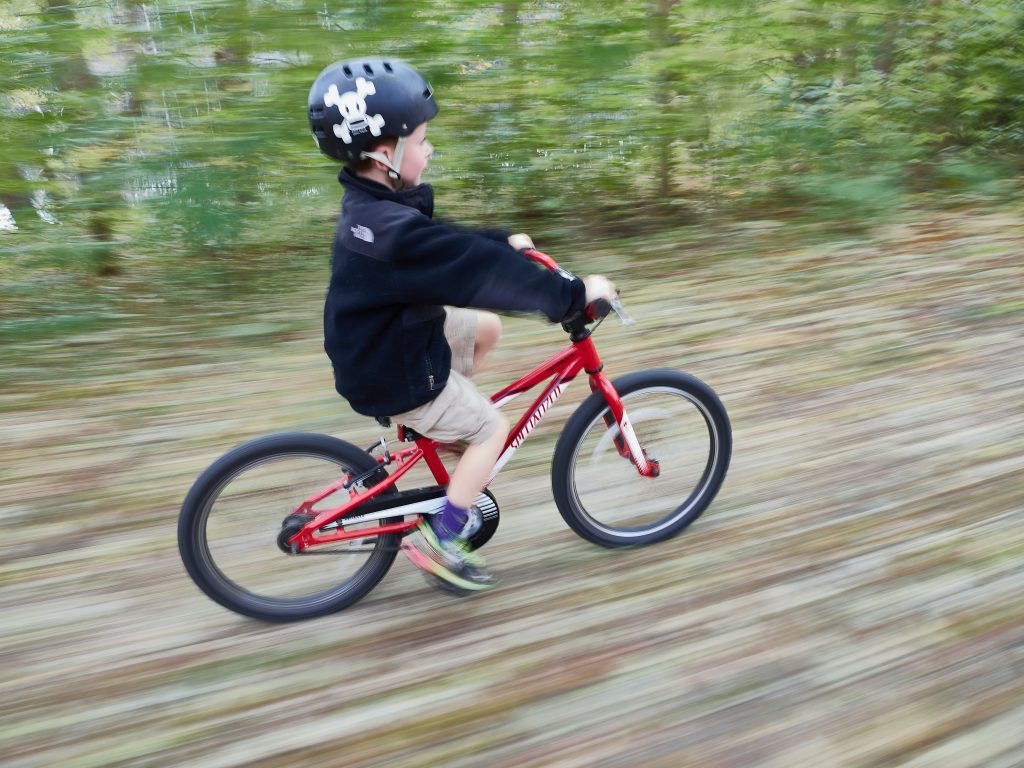
Last but not least are kids’ bikes. The type of bike you need will vary greatly depending on your child, but it will serve as the foundation to their bike riding years of the future, so the right choice is essential.
With kids’ bikes, there are several subcategories available on the market these days, including:
- Balance bikes
- BMX bikes
- Mountain bikes
- Gravel/cyclo-cross bikes
- Road bikes
Keep in mind the experience level of your children and what their interests may be. It is always best to start with more basic bikes and see where their interest leads.
Some features that you might see on kids’ bikes include:
- Training wheels
- Smaller wheels
- Pedal brakes (rather than handbrakes)
Typically, children will start at smaller wheel sizes and gradually progress. As the wheel size increases, so does the complexity of the bike itself. While they will initially start with smaller wheels and stabilizers, the wheel size should eventually increase, and they will integrate gears into their riding.
Pricing
As you can imagine, because kids’ bikes cover such a wide range of styles, the prices can vary pretty drastically. Basic, beginner balance bikes for young children are easily under $100.
As you increase in size and specialty, you’ll see prices also increase. Even bigger kid bikes can range from $500-$2,000.
Pros
- Grow your child’s love for riding
- Relatively inexpensive hobby
- Easy to find the right size for your child
Cons
- You will have to replace bikes as they advance their skills
- Specialized kids’ bikes can still be as expensive as adult bikes
- Kids quickly outgrow their smaller bikes
Read More: The Best 20-Inch Bikes For Your Kids In 2023
Summary
So, there it is. Now that you have a good sense of the different types of bikes out there, you can determine which is best suited for your cycling needs. Whether you are looking to ride for sport or fun, there are many types of bicycles to choose from. Hopefully, this guide has helped to lead you in the right direction to pick the perfect bike for your needs!

Michael
Hi, my name is Michael and I'm the chief editor of this website.
I've been riding all sorts of bikes for over a decade now and don't plan on stopping anytime soon.
Everyday, I learn new things and want to share my experiences with others.
Ready to join me on my journey?



